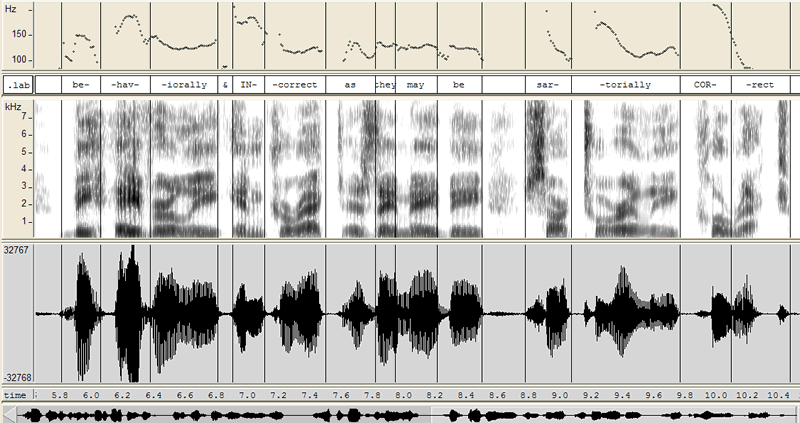October 28, 2005
Prosodically (in)correct
From Frank DeFord's commentary about the new NBA dress code, 10/26/2005 on NPR's Morning Edition, this semantico-phonetically interesting passage:
So too did the Minnesota Vikings institute a dress code not long ago [breath]
and yet the Vikes remain as [breath]
beHAViorally INcorrect as they may be [breath]
sarTORially COrrect.
This is a matched pair of playful allusions to the phrase "politically (in)correct". The first few pages of web search results for incorrect yield the other adverbially (in)correct echoes conservatively, patriotically, therapeutically, commercially, musically, spiritually and environmentally, and there must be dozens if not hundreds more of them out there.
In DeFord's case, the paired allusions create a nice example of double contrastive focus and the use of phrasing for emphasis. The feature that caught my attention, though, was the intonational highlighting of the prefix in- and the word fragment co-.
A commoner sort of contrastive focus is exemplified by DeFord's contrast between behaviorally and sartorially. As part of the performancy of this contrast, he highlights intonationally the syllable of each word that is its normal main stress. This is the usual effect of contrastive focus in English: the pitch-contour effect is strongest on the main-stressed syllable of a focused word or phrase. But in the case of the contrast between incorrect and correct, the syllables that mainly inherit the phonetic effect are not the normal main stresses.
This sort of thing was discussed in Ron Artstein, "Focus below the word level", Natural Language Semantics 12(1): 1-22, 2004. Artstein cite an analogous example from Bolinger (1963):
natural REgularity (“in a context that implied an opposition to IRregularity”)
Here's a display showing a pitch contour, a spectrogram and a waveform for DeFord's contrasts:
This display was created with WaveSurfer, an "Open Source tool for sound visualization and manipulation" that I recommend for casual users because it's relatively easy to learn to use in simple ways. Another excellent open-source program, Praat, offers a much wider range of functions, and is also better for producing publication-quality graphics rather than simple screenshots like that shown above.
Posted by Mark Liberman at October 28, 2005 04:52 AM